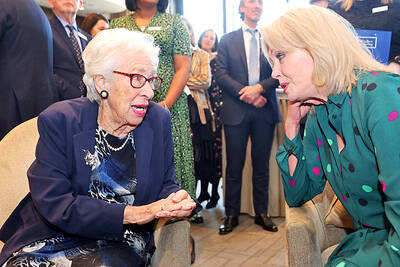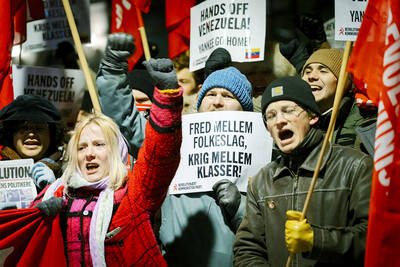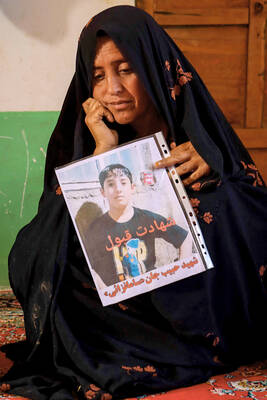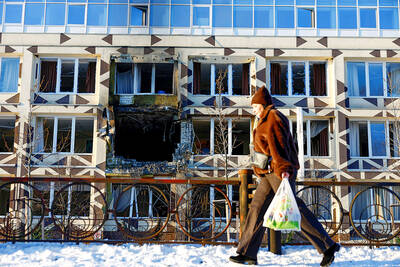It started with the doctors sculpting his nose, then an operation to cut his eyelids to create folds and make his eyes appear bigger. Next came Botox injections in his forehead, followed by the fat being surgically sucked out of his abdomen.
Before he was done, Park Hyo-jung had 24 procedures on his body over more than three years to improve his appearance -- including adding dimples on his cheeks and removing blemishes and chest hair -- transforming his former droopy face into his current studly visage.
"Before I didn't have a girlfriend, I didn't want to even try because I didn't have confidence," said the 24-year-old, a technician at a medical supply firm and part-time student.
While Park's case is extreme, there's little question that South Korean men are increasingly undergoing surgical beauty treatments -- once the almost exclusive domain of women -- in hopes of boosting self-esteem and better competing for jobs. South Korean media have called the phenomenon a male "plastic surgery craze" and reported a boom in cosmetics for men.
The trend of men seeking a nip and tuck has reached all the way to the president's office: Roh Moo-hyun had his eyelids done last year. The official reason his office gave was to improve his sight, but the president's undergoing the cosmetic procedure has effectively ended the already-fading taboo on even older men having beautifying surgery.
"They don't hesitate anymore since President Roh got plastic surgery," said Lee Sang-eun, director of the Real Clinic Group.
Last November Lee's company opened a male-only clinic, Real For Men, which it says is the first in the country to capitalize on the newfound willingness of men to seek beauty in the operating room.
Statistics on the trend are hard to come by due to the sheer number of clinics performing cosmetic proce-dures. It seems nearly every building in Seoul's trendy Apgujeong and Kangnam districts has a "beauty" or "aesthetic" clinic, often located together with hair stylists or dentists for a one-stop total makeover.
Wee Sung-yun, who performed the last six surgeries on Park, said he saw almost only female patients until several years ago, but that now some one-third of his clients are men.
Men usually seek eye or nose alterations, saying they hope to do better at job interviews, Wee said.
In other hip cities, "metrosex-uals" -- stylish heterosexual men who aren't afraid to show their feminine side -- have already been overtaken by the "ubersexual," a more macho breed whose straight sexual orientation is unambiguous.
But in Seoul, the trend veers the other way toward the "cross-sexual," an androgynous form of beauty. That type of pretty-boy allure has gained renewed attention through the recent hit film King and the Clown, which became South Korea's No. 1 all-time movie this month and portrays an effeminate male jester at the center of a gay love triangle during Korea's Chosun empire.
South Korea has also seen a change in generations since the end of the Korean War, with recent rapid modernization and the comforts of wealth dramatically transforming the way young people live compared with their parents, who suffered for decades from the 1950-1953 war's aftermath.
"The former generation who experienced the Korean War didn't have any time to take care of themselves. But those in their 20s and 30s have grown up in a more open environment where they don't think it's a shame for men to beautify themselves," said Kim Jun-hyun, editor in chief of the South Korean version of the US-based Men's Health magazine, which was launched here this month.
He said the market for men's grooming, cosmetics and athletic equipment has gone up 20-40 percent in the last five years. Women's rising social position also means they are putting increasing importance on the appearance of potential mates and not just their earning potential and breeding, Kim said.

Auschwitz survivor Eva Schloss, the stepsister of teenage diarist Anne Frank and a tireless educator about the horrors of the Holocaust, has died. She was 96. The Anne Frank Trust UK, of which Schloss was honorary president, said she died on Saturday in London, where she lived. Britain’s King Charles III said he was “privileged and proud” to have known Schloss, who cofounded the charitable trust to help young people challenge prejudice. “The horrors that she endured as a young woman are impossible to comprehend and yet she devoted the rest of her life to overcoming hatred and prejudice, promoting kindness, courage, understanding

‘DISRESPECTFUL’: Katie Miller, the wife of Trump’s most influential adviser, drew ire by posting an image of Greenland in the colors of the US flag, captioning it ‘SOON’ US President Donald Trump on Sunday doubled down on his claim that Greenland should become part of the US, despite calls by the Danish prime minister to stop “threatening” the territory. Washington’s military intervention in Venezuela has reignited fears for Greenland, which Trump has repeatedly said he wants to annex, given its strategic location in the arctic. While aboard Air Force One en route to Washington, Trump reiterated the goal. “We need Greenland from the standpoint of national security, and Denmark is not going to be able to do it,” he said in response to a reporter’s question. “We’ll worry about Greenland in

PERILOUS JOURNEY: Over just a matter of days last month, about 1,600 Afghans who were at risk of perishing due to the cold weather were rescued in the mountains Habibullah set off from his home in western Afghanistan determined to find work in Iran, only for the 15-year-old to freeze to death while walking across the mountainous frontier. “He was forced to go, to bring food for the family,” his mother, Mah Jan, said at her mud home in Ghunjan village. “We have no food to eat, we have no clothes to wear. The house in which I live has no electricity, no water. I have no proper window, nothing to burn for heating,” she added, clutching a photograph of her son. Habibullah was one of at least 18 migrants who died

Russia early yesterday bombarded Ukraine, killing two people in the Kyiv region, authorities said on the eve of a diplomatic summit in France. A nationwide siren was issued just after midnight, while Ukraine’s military said air defenses were operating in several places. In the capital, a private medical facility caught fire as a result of the Russian strikes, killing one person and wounding three others, the State Emergency Service of Kyiv said. It released images of rescuers removing people on stretchers from a gutted building. Another pre-dawn attack on the neighboring city of Fastiv killed one man in his 70s, Kyiv Governor Mykola